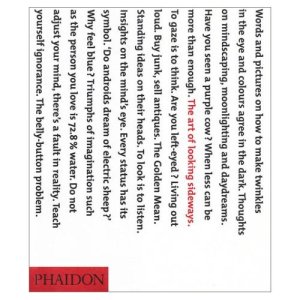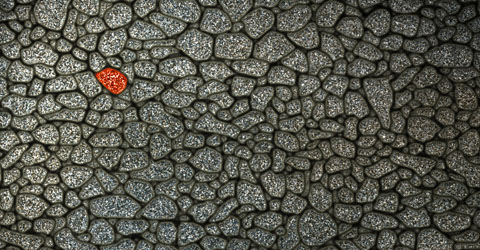This one stands as a holy book, at one time a reference book and a unique source of inspiration.
The author, Allan Fletcher called it a cross between a collage and a box (…) that talks about the things you weren’t taught at school. Trying to describe it is a herculean task. It defies being classified. The author mentioned during an interview that in a bookshop, it could only be classified under the section “How to get a PhD in living”.

In fact, it is a 1000+ page collection of images, curious facts, useless information, memories, and oddities. It’s clever, funny, constantly surprising and beautiful. Allan Fletcher has distilled a lifetime of experience and reflection into a brilliantly witty exploration around what is perception, colour, pattern, proportion, paradox, illusion, language, alphabets, words, letters, ideas, creativity, culture, style, aesthetics and value.

Here’s what some people said about the book:
Bamber Gascoigne, author and broadcaster `You can forget Stephen Hawking and all that astrophysics malarkey. Alan Fletcher is much nearer to having a complete theory of everything. Funny, clever, lateral, surprising and beautiful. Creativity is as difficult to define as Alan Fletcher himself, but one thing is certain you know it when you see it. And here it is`.

Fiona MacCarthy, Biographer and Cultural Historian `A mad, wondrous, inspiring kaleidoscope of exhilarating words, provocative ideas and brilliant images which form fresh and surprising patterns on each encounter. I defy anyone who can read and see to be bored by any of it. But beware – it`s addictive`
Patrick Burgoyne, Editor of `Creative Review` magazine `A hugely beguiling labyrinth of ideas, observations, perceptions and wisdom. Its quicksilver shifts in page design and its open, collage-like structure brilliantly signal its breadth of content, propelling you, with mounting amazement, between peerless insights, sudden illuminations of a dimly grasped point and jaw-dropping discoveries.`

Eve Arnold, Magnum Photographer `A masterful massing together of ideas, philosophies, imagery and points of view that does far more than open your eyes – it is an encyclopaedic revelation of a genuine polymath`.
One word of advice, though: this book may not be your cup of tea. You will not read it through. You will not search through it. If you do, you may well not find what you are looking for in the middle of the 1000+ pages. Instead, the book will take you from your path and set your mind on a different track, even if you had a fixed idea. In the words of Rick Poyner `this book is not a book to read. It`s a book to be with, a book to be in, like a favorite room.`
11 May, 2008
Categories: Reviews . Tags: allan fletcher, art of looking sideways, ideas, memories, oddities, quotations, Reviews . Author: P . Comments: Leave a comment



